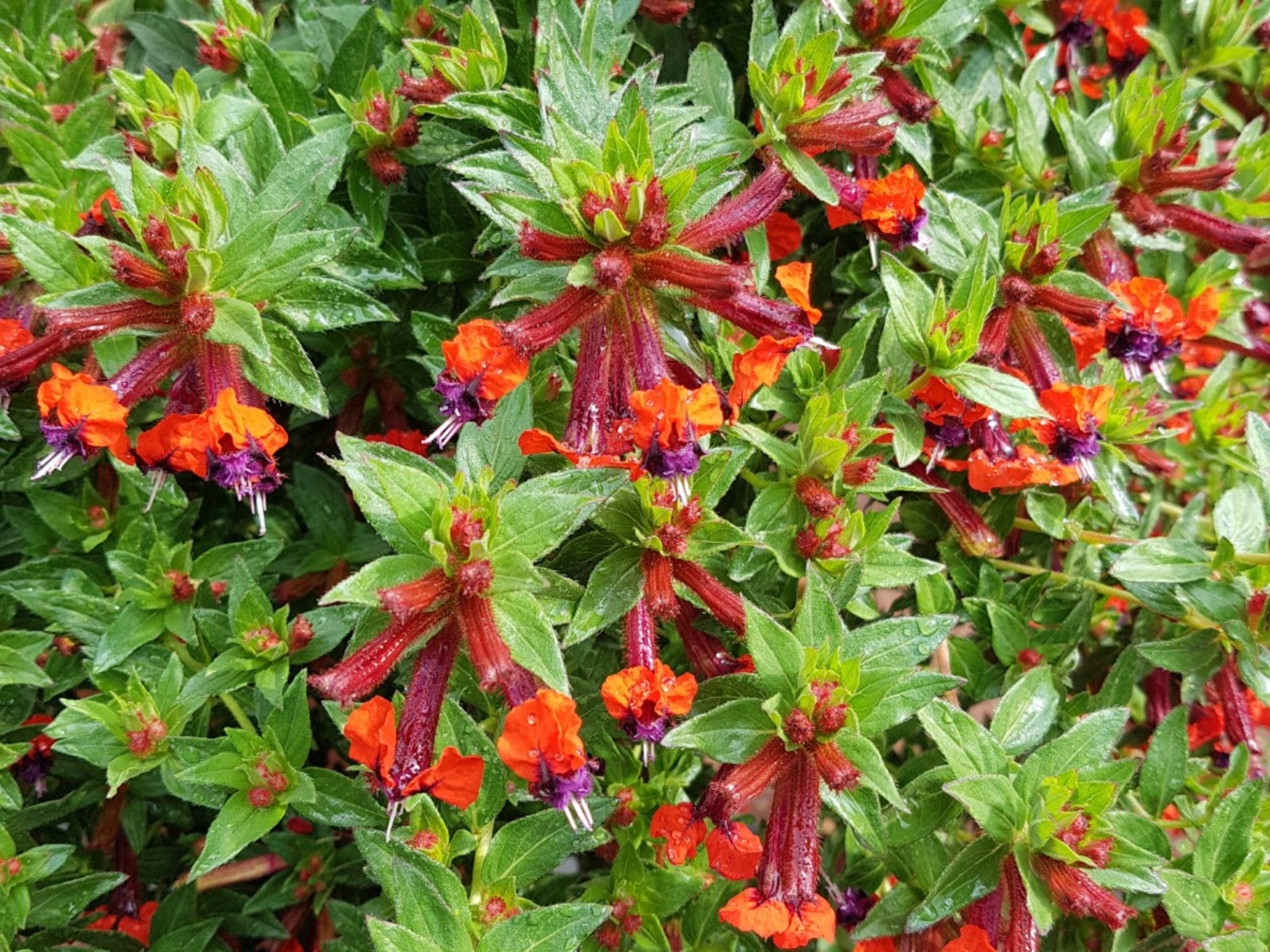The delightfully bat-like blooms of Cuphea llavea make this tropical plant a fun addition to gardens. However, bacterial wilt caused by Ralstonia solanacearum can spell disaster for your prized bat faced cuphea. Learning to recognize, prevent and treat bacterial wilt is key to ensuring the health and longevity of this beautiful plant.
This comprehensive guide covers identifying bacterial wilt, techniques to eliminate and prevent recurrence, and maintaining optimal plant health. Arm yourself with knowledge to defend your cuphea against this destructive disease.
Detecting Bacterial Wilt
Be on the lookout for these common symptoms
- Wilting of leaves and stems despite adequate water
- Yellowing or browning leaves, starting at tips and margins
- Slowed growth and reduced flowering
- Dark discoloration in vascular tissues when stems are cut
Act swiftly when any signs appear to contain infection before it spreads Know the enemy to conquer it!
Strategies to Eradicate Bacterial Wilt
Once bacterial wilt is detected, implement these methods to eliminate it:
- Isolate and remove infected plants immediately to prevent contamination
- Prune diseased stems and leaves, disposing of debris away from garden
- Improve drainage and avoid excess moisture
- Disinfect tools after working with infected plants
- Apply copper-based fungicides according to label directions
- Remove and destroy severely infected plants entirely
Persistence is vital as bacteria can persist in soil. Don’t give up too soon!
Preventing Recurrence of Bacterial Wilt
Prevention is the best cure. Integrate these practices to keep bacterial wilt at bay:
- Allow soil to dry adequately between waterings and improve drainage
- Disinfect tools regularly
- Rotate plantings to interrupt disease cycle
- Introduce disease-resistant cuphea varieties
- Avoid working amidst wet foliage
- Apply preventative copper spray treatments
- Remove weeds, which may harbor disease
- Sterilize pots and trays prior to use
Diligence in prevention helps ensure a healthy, thriving bat faced cuphea.
Promoting Plant Health
The best defense is a vigorous offense. Optimizing growing conditions builds the plant’s strength to resist disease:
- Ensure proper sunlight, air flow and appropriate temperatures
- Provide adequate spacing for air circulation
- Maintain even moisture – don’t over or underwater
- Apply balanced fertilizer according to package rates
- Monitor for pests like whiteflies that may spread infection
- Scout regularly for early disease detection
- Prune strategically to open up interior to light and air
With persistence in applying preventative practices, prompt disease detection, and properly eradicating infections, you can gain the upper hand against bacterial wilt. Pay close attention to your beloved bat faced cuphea and don’t hesitate to enlist expert help for stubborn cases. A multi-pronged approach combining vigilance, care and targeted treatment will allow you to continue enjoying the delightful blossoms of this unusual plant for years to come.

Pests and Pathogens: Unwanted Guests
Your Bat-faced Cuphea could be playing host to unseen freeloaders. Keep an eye out for the usual suspects: aphids, spider mites, mealybugs, and thrips. Telltale signs include sticky residue, fine webbing, or distorted leaves. Regular plant check-ups are non-negotiable; think of them as routine health check-ups for your green buddy.
When Water Woes Strike: Over and Under-Watering
Yellow leaves waving a caution flag, and stems puffier than a marshmallow should have you worried. Soil thats more swamp than land is a clear SOS from your Bat-faced Cuphea.
Leaves crispier than fall foliage and soil pulling away from the pot like a bad breakup are your plants way of saying, “Im thirsty.” If your plants leaves feel like theyre auditioning for a role as autumn leaves, its time to up the hydration game.
Bats How to Get Rid of them Fast | Top 7 Ways
FAQ
How do you get rid of bacterial wilt?
Can bacterial wilt plants recover?
How to get rid of a bacterial infection in a plant?
Does bacterial wilt spread?
What is a bat face Cuphea plant?
Native to Central America and Mexico, bat face cuphea plant (Cuphea llavea) is named for its interesting little bat-faced blooms of deep purple and bright red. Read this article for helpful informatio
How do you grow a bat face Cuphea?
The easiest way to grow cuphea flowers is to purchase bedding plants at a nursery or garden center. Otherwise, start seeds indoors 10 to 12 weeks before the last hard frost in your area. Plant bat face cuphea in full sunlight and the plant will reward you with color throughout the season.
How do you care for a bat faced Cuphea?
For best results, provide plants with: Organic soil. Full sun or part shade, depending on where you live. Regular water. All-purpose fertilizer. Bat-faced cuphea is fairly low maintenance. You can perform some light tip pruning or pinching if plants become too leggy.
Do cupheas have a bat face?
From their bat-faced appearance to their vibrant colors, cupheas add a touch of whimsy and beauty to any garden. So, if you’re looking for a plant that is both easy to care for and visually stunning, look no further than cupheas. Cuphea Bat Face, also known as Cuphea llavea, is a unique plant with beautiful bat-like flowers.
